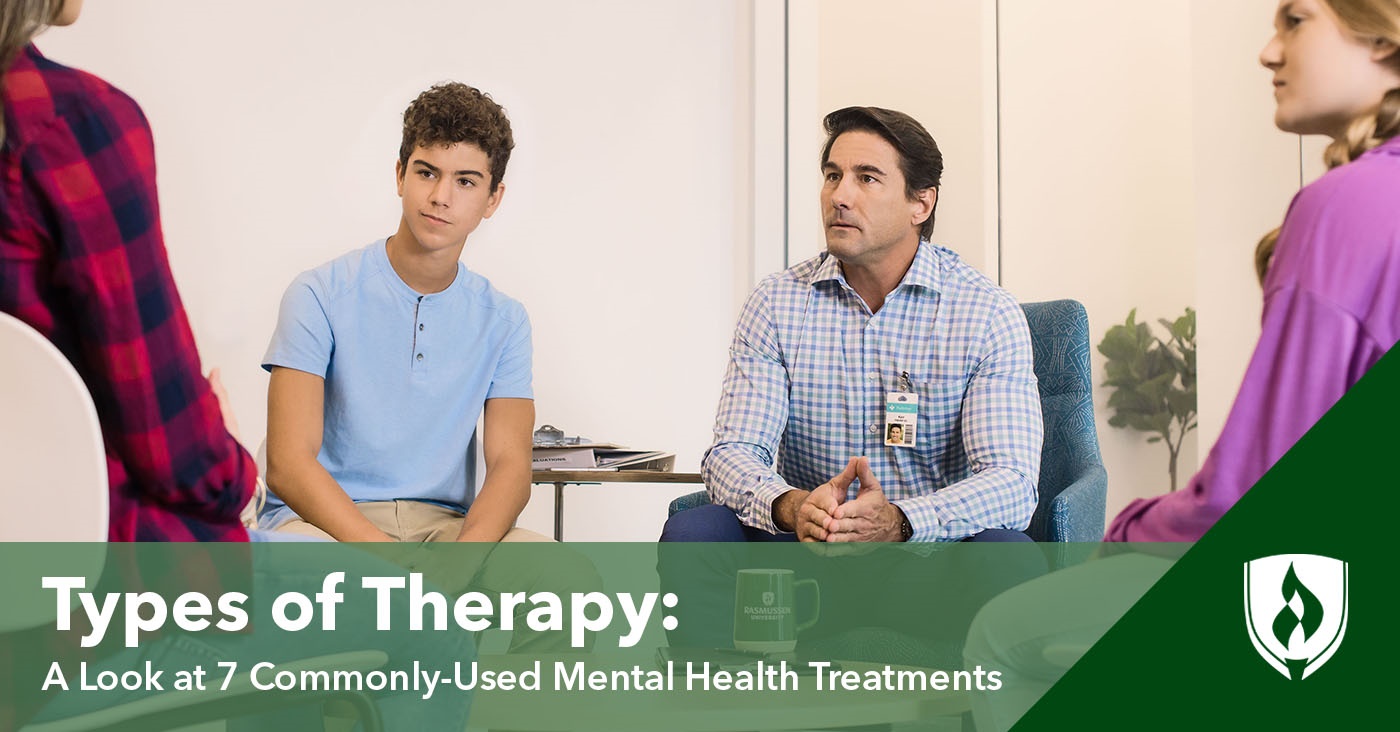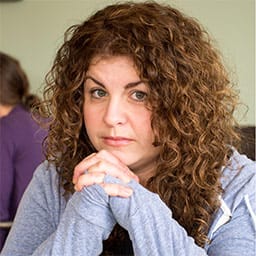Types of Therapy: A Look at 7 Commonly Used Mental Health Treatments
By Carrie Mesrobian on 02/21/2022

In the past few decades, getting therapy for mental health conditions has come out from the shadows and is now much more openly discussed. The U.S. has made some excellent societal strides in being more accepting of mental health treatments, and that trend may accelerate as the world contends with mental-health-related aftershocks tied to the COVID-19 pandemic.
The upheaval caused by the pandemic has brought the need for greater mental health access into clear focus. Still, many people aren’t exactly sure what it means when they’re told to seek therapy. If you’ve ever wondered what goes on in a therapy session and what types of practices and people are involved, you’re in the right place. We’ll break down who some of the key players in mental health therapy are and explore some of the more commonly used types of treatments.
Who provides mental health treatments and therapies?
Psychiatrists
Psychiatrists are medical doctors who help patients with both medical and mental health issues. Some psychiatrists focus on medication management for patients with complex or dual diagnoses, while others offer psychotherapy options.
Physicians and nurse practitioners
Many people are unaware that a visit with their regular doctor or nurse practitioner can also include mental health check-ups and prescriptions for common mental health disorders such as depression and anxiety. While most generalist physicians don’t offer psychotherapy or other talk therapies, they can perform medical screenings to determine if there are underlying medical causes that also need attention. Nurse practitioners with specialized training, like psychiatric-mental health nurse practitioners, do commonly offer therapy services and may also prescribe medications, though this varies from state to state.
Psychologists
Psychologists are professionals with a doctoral degree in psychology. Psychologists generally train in specific areas of therapy and often specialize in certain populations and diagnoses. Psychologists are not medical doctors, so they can’t prescribe medication, but they are often aware of commonly prescribed medications and can consult with psychiatrists and medical doctors as needed.
Therapists and counselors
Therapists and counselors generally have bachelor’s or master’s degrees in clinical therapeutic methods. Some therapists are also licensed in social work because they work with special populations with particular needs, such as school-age children or people with substance use disorder.
Types of therapy formats
There are several different formats for mental health therapy. Here are some of the most common formats you’ll find:
- Individual therapy is one-on-one, with the patient and the therapist only.
- Marital or couples therapy is with two people in an established relationship and at least one therapist.
- Group therapy is three or more patients with similar diagnoses and at least one therapist who moderates and leads the group through activities and discussions.
- Family therapy can involve entire families, from parents to young children, with the therapist guiding them.
7 Commonly used types of mental health therapies
There are many types of therapies for a variety of mental health conditions. Some of the therapies below are used in group and family settings, while others are limited to individuals. Group therapy is common in a hospital or other clinical setting, but there are outpatient group therapy options, too.
Cognitive-behavioral therapy (CBT)
What it is: Cognitive-behavioral therapy is based on the principle that certain types of thinking can be unhelpful and distorted. CBT explores ways to reframe these faulty thought patterns by gaining a greater understanding of one’s own emotions and behaviors as well as that of others.
Who it helps: people with depression, anxiety, substance use disorders, eating disorders and relationship problems.
Common formats: individual, group, marital/couples, family
Dialectical-behavioral therapy (DBT)
What it is: Dialectical-behavioral therapy is designed to help patients manage difficult and intense emotions. DBT focuses on four main skill areas: mindfulness, distress tolerance, emotional regulation and interpersonal effectiveness.
Who it helps: DBT was initially developed for use with people with borderline personality disorder, but is also used with people with depression, eating disorders, substance use disorder, post-traumatic stress disorder and bipolar disorder.
Common formats: individual, group, marital/couples, family
Art therapy
What it is: Art therapy involves the use of creative expression in order to examine underlying emotional and psychological issues. Patients are encouraged to paint, draw, sculpt, color or assemble collages, which the certified art therapist then examines and guides them through the various symbols and themes they’ve created. Artistic ability isn’t required, as the goal is to make connections about the creative choices the patient has made with their emotions and personal experiences.
Who it helps: Children and adolescents do well with art therapy, as the activity of making something provides a visible context for feelings and experiences that can be hard to describe in words. People with depression and anxiety as well as those dealing with extreme stress are also helped with this type of treatment.
Common formats: individual, group
Somatic therapy
What it is: Somatic therapy uses both psychotherapy and physical therapies. Meditation, physical movement, yoga, dance, massage and vocal exercises may all be used in combination to help patients process and understand their emotions.
Who it helps: People with digestive disorders, stress, anxiety, depression, grief, substance use disorder, chronic pain and post-traumatic stress.
Common formats: individual
Eye movement desensitization and reprocessing (EMDR) therapy
What it is: EMDR is a therapy for patients who are struggling with trauma or stressful life events. Originally developed for soldiers suffering from PTSD from their experiences in Vietnam, EMDR works to help people mindfully process traumatic memories and difficult moments in conjunction with rhythmic tones or taps.
Who it helps: People coping with trauma, past abuse, anxiety, depression, panic attacks, grief, dissociative disorder, substance use disorder, eating disorders and phobias.
Common formats: individual
Play therapy
What it is: Though it can be used with all ages, generally play therapy is used in child psychotherapy with children aged 3–12. Through imaginative play, arts and crafts, dance, storytelling, toys, board games and other activities, the patient learns to express themselves, gain empathy, practice managing conflict and regulate emotional impulses.
Who it helps: Children who are coping with grief, trauma, abuse, learning disabilities, depression, anxiety, autism and attention deficit disorders.
Common formats: individual, family
Family systems therapy
What it is: Family systems therapy looks at a patient’s family of origin as the primary context in which to solve problems. This type of “talk” therapy focuses on helping patients cope with difficulties and issues that arise through family relationships, focusing on the core belief that what happens to one family member happens to all.
Who it helps: People with anxiety, depression, bipolar disorder, eating disorders, personality disorders, substance use disorder and physical disabilities.
Common formats: individual, family
Find out more about mental health
These are just a few examples of the types of mental health therapies and treatments that are available. Mental health is an area of healthcare that continues to grow and develop as more research is done on the essential connection between mind and body.
It takes skilled professionals to tend to the mental health needs of others. Could you be a good fit for joining the ranks of mental health care professionals? You can learn more about how nurses and nurse practitioners care for patients in our article “Everything You Should Know About Psychiatric Nursing.”
Related Articles:




